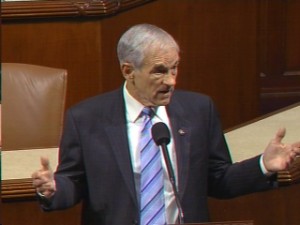There has been a lot of talk in the news recently about the Federal Reserve and the actions it has taken over the past few months. Many media pundits have been bending over backwards to praise the Fed for supposedly restoring stability to the market. This interpretation of the Fed’s actions couldn’t be further from the truth.

The current market crisis began because of Federal Reserve monetary policy during the early 2000s in which the Fed lowered the interest rate to a below-market rate. The artificially low rates led to overinvestment in housing and other malinvestments. When the first indications of market trouble began back in August of 2007, instead of holding back and allowing bad decision-makers to suffer the consequences of their actions, the Federal Reserve took aggressive, inflationary action to ensure that large Wall Street firms would not lose money. It began by lowering the discount rates, the rates of interest charged to banks who borrow directly from the Fed, and lengthening the terms of such loans. This eliminated much of the stigma from discount window borrowing and enabled troubled banks to come to the Fed directly for funding, pay only a slightly higher interest rate but also secure these loans for a period longer than just overnight.
After the massive increase in discount window lending proved to be ineffective, the Fed became more and more creative with its funding arrangements. It has since created the Term Auction Facility (TAF), the Primary Dealer Credit Facility (PDCF), and the Term Securities Lending Facility (TSLF). The upshot of all of these new programs is that through auctions of securities or through deposits of collateral, the Fed is pushing hundreds of billions of dollars of funding into the financial system in a misguided attempt to shore up the stability of the system.
The PDCF in particular is a departure from the established pattern of Fed intervention because it targets the primary dealers, the largest investment banks who purchase government securities directly from the New York Fed. These banks have never before been allowed to borrow from the Fed, but thanks to the Fed Board of Governors, these investment banks can now receive loans from the Fed in exchange for securities which will in all likelihood soon lose much of their value.
The net effect of all this new funding has been to pump hundreds of billions of dollars into the financial system and bail out banks whose poor decision making should have caused them to go out of business. Instead of being forced to learn their lesson, these poor-performing banks are being rewarded for their financial mismanagement, and the ultimate cost of this bailout will fall on the American taxpayers. Already this new money flowing into the system is spurring talk of the next speculative bubble, possibly this time in commodities.
Worst of all, the Treasury Department has recently proposed that the Federal Reserve, which was responsible for the housing bubble and subprime crisis in the first place, be rewarded for all its intervention by being turned into a super-regulator. The Treasury foresees the Fed as the guarantor of market stability, with oversight over any financial institution that could pose a threat to the financial system. Rewarding poor performing financial institutions is bad enough, but rewarding the institution that enabled the current economic crisis is unconscionable.
Source: Ron Paul